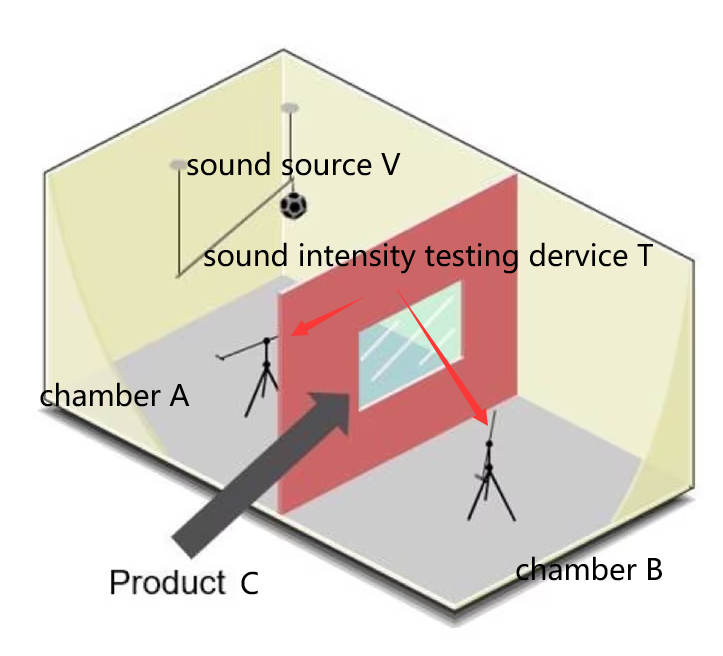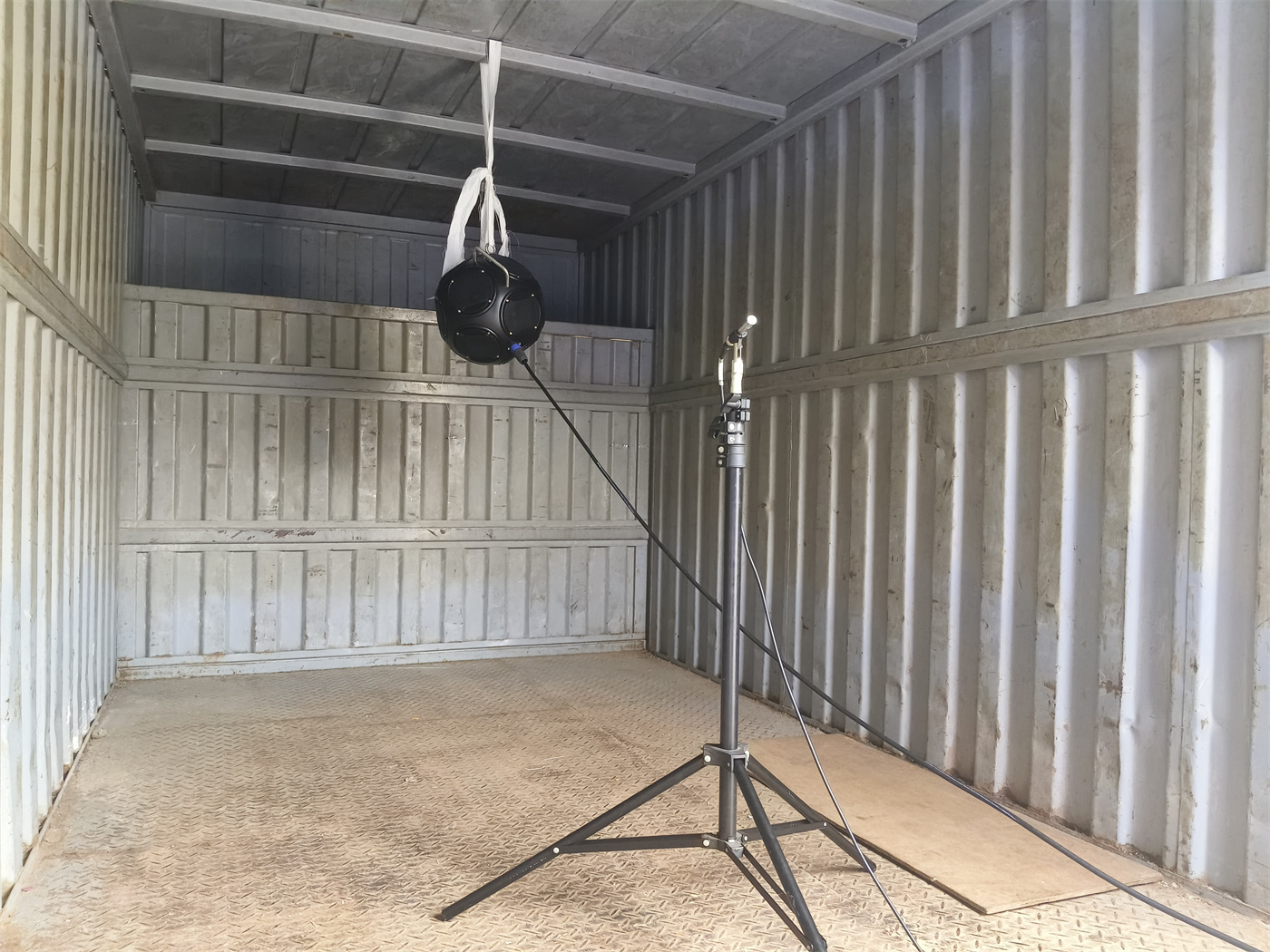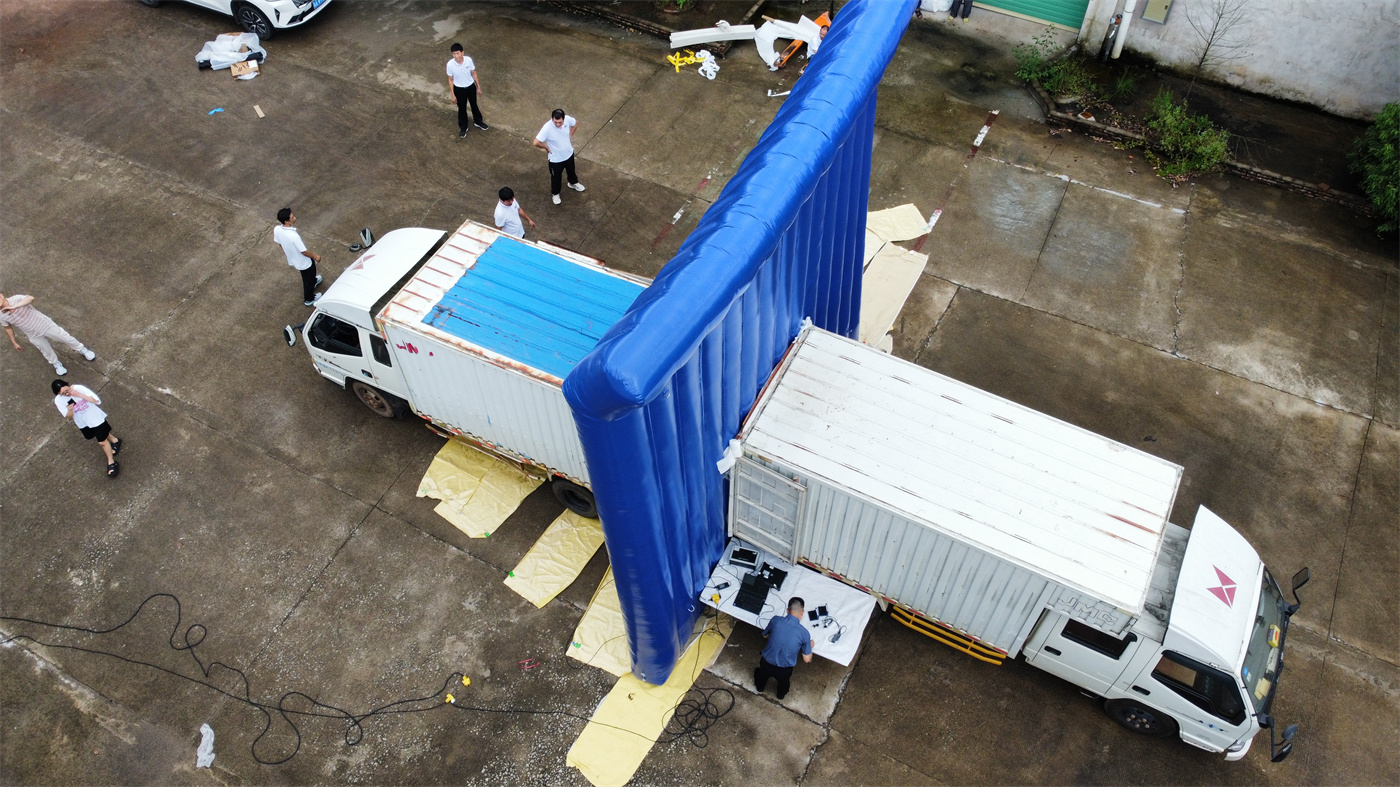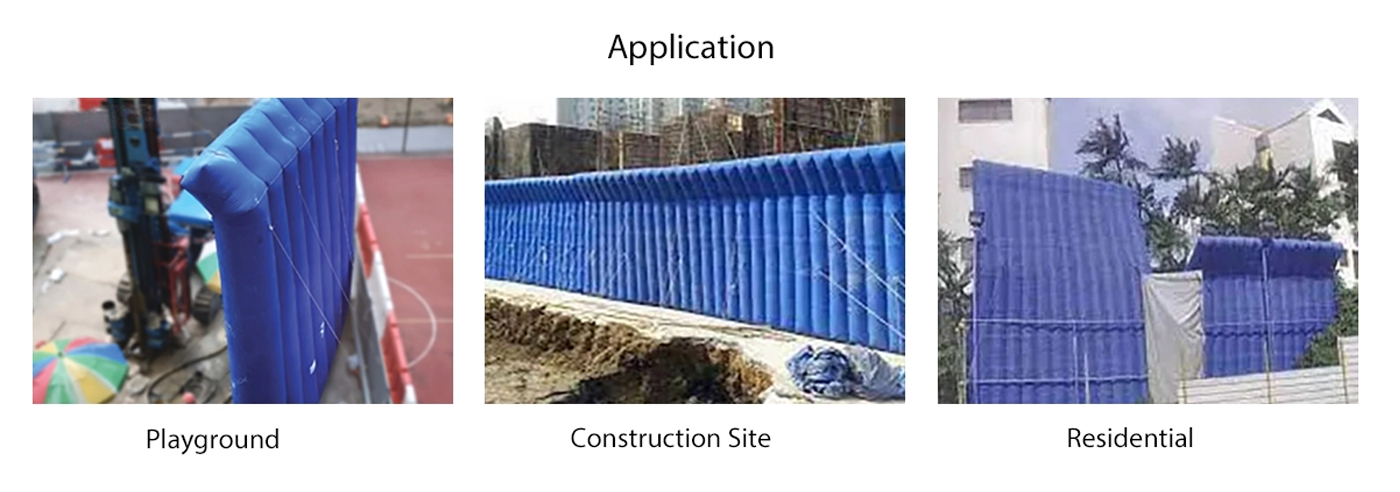Ace Inflatables, inflatables mufacturer and designer of high qulity inflatable theme park, inflatable water park, inflatable 5K obstacle. ace@inflatables-ace.com0086 135 2762 1579
Inflatable Noise Barrier Test From ACE Inflatables
Introduction
In urban and industrial environments, noise pollution is a growing concern, with adverse effects on human health and well-being. As cities expand and infrastructure projects increase, the need for effective noise mitigation strategies becomes more pressing. Inflatable noise barriers have emerged as a flexible and cost-effective solution to control and reduce noise levels in various settings. This test was designed to evaluate the effectiveness of an inflatable noise wall in reducing sound transmission.
Experimental principle:
Two sealed chambers A and B with single end openings, place product C between A and B, and seal the openings of A and B with the product.
Place sound source V in chamber A: capable of emitting sounds of different frequencies (several frequency values) with an intensity of 100dB
Place the sound intensity testing device T in chamber B, which can read the intensity of different frequency sounds at the current location.

Methodology
The experiment involved two trucks acting as test chambers, with an inflatable noise barrier positioned between them, ensuring no gaps were present. One truck housed a noise source emitting sound at a consistent level, while both trucks were equipped with sound receivers connected to computers for data collection. The noise source was calibrated to produce a sound level of approximately 100 decibels (dB) within the first truck.


Results
The sound levels recorded showed a clear reduction in noise transmission due to the inflatable noise barrier. The receiver in the truck containing the noise source measured a sound intensity of around 100 dB. In contrast, the receiver in the second truck, which was shielded by the inflatable barrier, recorded a reduced sound intensity of approximately 80 dB. This indicates that the inflatable noise wall effectively reduced the noise level by about 20 dB.

Discussion
The results demonstrate that the inflatable noise barrier has a significant noise reduction capability. A 20 dB reduction in sound level suggests that the barrier can block a substantial portion of the noise, making it a viable option for various noise-sensitive environments.
Advantages of Inflatable Noise Barriers
Inflatable noise barriers offer several advantages over traditional noise walls:
1. Ease of Installation: They can be quickly set up and deployed, requiring less time and labor.
2. Customizability: These barriers can be tailored to fit different spaces and needs, providing flexibility in their application.
3. Portability and Reusability: Unlike permanent structures, inflatable barriers can be easily dismantled, transported, and reused at different locations, making them cost-effective and sustainable.
Conclusion
The inflatable noise barrier tested in this experiment proved to be an effective solution for reducing noise transmission. With its ease of installation, customizability, and reusability, it presents a promising alternative to traditional noise walls, particularly in urban construction sites where quick deployment and flexibility are crucial.







